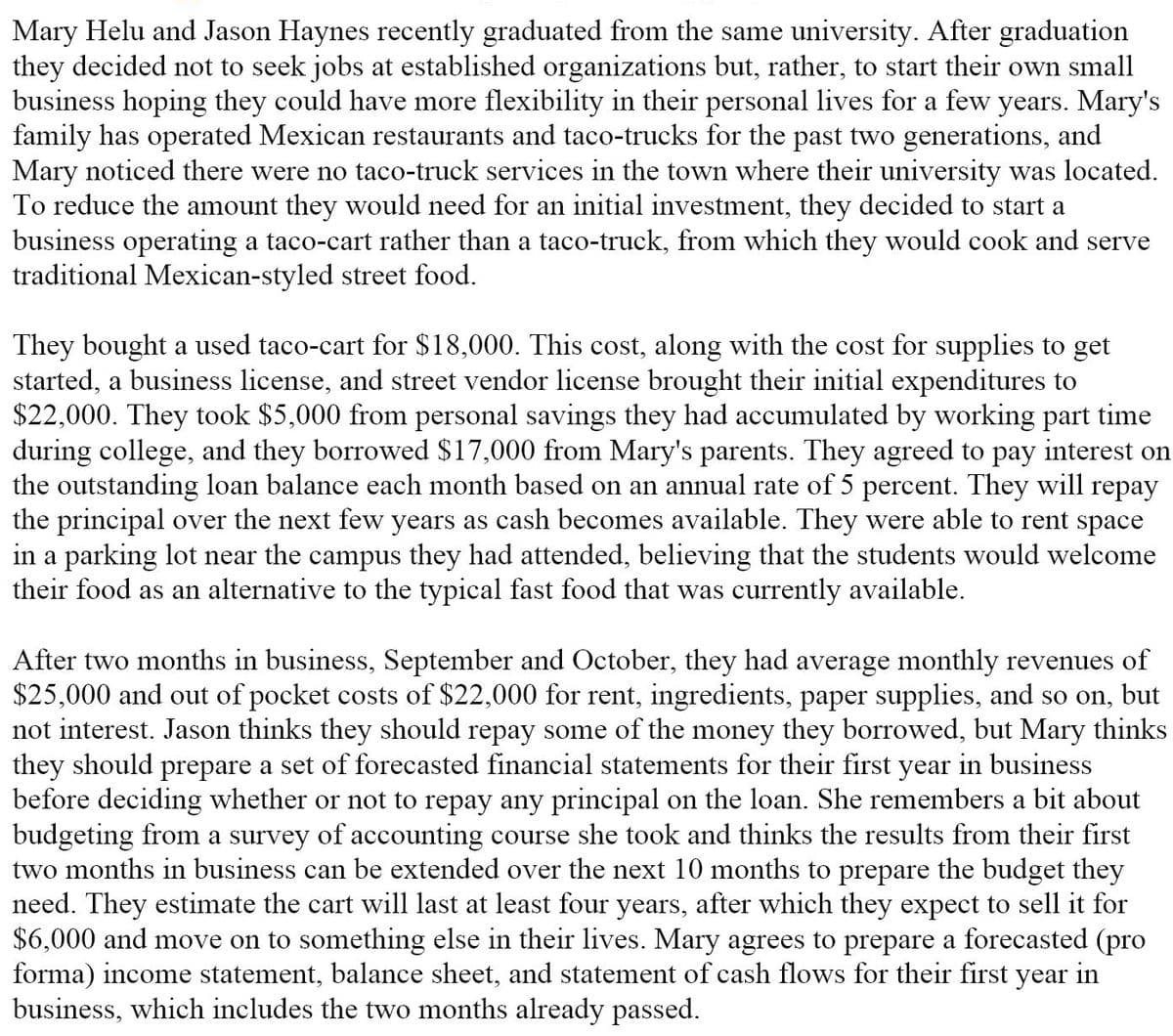a. Prepare the annual pro forma financial statements that you would expect Mary to prepare based on her comments about her expectations for the business. Assume no principal will be repaid on the loan. b. Review the statements you prepared for the first requirement and prepare a list of reasons why actual results for Jason and Mary's business probably will not match their budgeted statements.
a. Prepare the annual pro forma financial statements that you would expect Mary to prepare based on her comments about her expectations for the business. Assume no principal will be repaid on the loan. b. Review the statements you prepared for the first requirement and prepare a list of reasons why actual results for Jason and Mary's business probably will not match their budgeted statements.
Chapter9: Deductions: Employee And Self- Employed-related Expenses
Section: Chapter Questions
Problem 49P
Related questions
Question

Transcribed Image Text:a. Prepare the annual pro forma financial statements that you would expect Mary to prepare
based on her comments about her expectations for the business. Assume no principal will
be repaid on the loan.
b. Review the statements you prepared for the first requirement and prepare a list of reasons
why actual results for Jason and Mary's business probably will not match their budgeted
statements.

Transcribed Image Text:Mary Helu and Jason Haynes recently graduated from the same university. After graduation
they decided not to seek jobs at established organizations but, rather, to start their own small
business hoping they could have more flexibility in their personal lives for a few years. Mary's
family has operated Mexican restaurants and taco-trucks for the past two generations, and
Mary noticed there were no taco-truck services in the town where their university was located.
To reduce the amount they would need for an initial investment, they decided to start a
business operating a taco-cart rather than a taco-truck, from which they would cook and serve
traditional Mexican-styled street food.
They bought a used taco-cart for $18,000. This cost, along with the cost for supplies to get
started, a business license, and street vendor license brought their initial expenditures to
$22,000. They took $5,000 from personal savings they had accumulated by working part time
during college, and they borrowed $17,000 from Mary's parents. They agreed to pay interest on
the outstanding loan balance each month based on an annual rate of 5 percent. They will repay
the principal over the next few years as cash becomes available. They were able to rent space
in a parking lot near the campus they had attended, believing that the students would welcome
their food as an alternative to the typical fast food that was currently available.
After two months in business, September and October, they had average monthly revenues of
$25,000 and out of pocket costs of $22,000 for rent, ingredients, paper supplies, and so on, but
not interest. Jason thinks they should repay some of the money they borrowed, but Mary thinks
they should prepare a set of forecasted financial statements for their first year in business
before deciding whether or not to repay any principal on the loan. She remembers a bit about
budgeting from a survey of accounting course she took and thinks the results from their first
two months in business can be extended over the next 10 months to prepare the budget they
need. They estimate the cart will last at least four years, after which they expect to sell it for
$6,000 and move on to something else in their lives. Mary agrees to prepare a forecasted (pro
forma) income statement, balance sheet, and statement of cash flows for their first year in
business, which includes the two months already passed.
Expert Solution
This question has been solved!
Explore an expertly crafted, step-by-step solution for a thorough understanding of key concepts.
This is a popular solution!
Trending now
This is a popular solution!
Step by step
Solved in 2 steps

Recommended textbooks for you

Individual Income Taxes
Accounting
ISBN:
9780357109731
Author:
Hoffman
Publisher:
CENGAGE LEARNING - CONSIGNMENT



Individual Income Taxes
Accounting
ISBN:
9780357109731
Author:
Hoffman
Publisher:
CENGAGE LEARNING - CONSIGNMENT





Principles of Accounting Volume 2
Accounting
ISBN:
9781947172609
Author:
OpenStax
Publisher:
OpenStax College